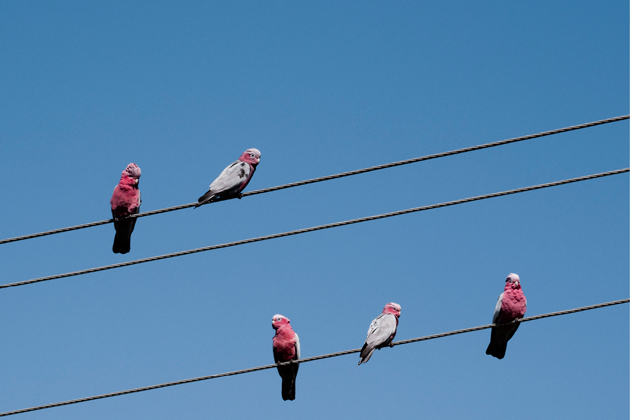Australian Wool Production Forecast Report April 2019
The Australian Wool Production Forecasting Committee forecasts that Australian shorn wool production for 2018/19 will be 298 mkg greasy. This is a 12.7% decline from the levels in 2017/18 and reflects the continuing drought conditions across large parts of Australia. The Committee’s first forecast for 2019/20 is for shorn wool production to be 285 mkg greasy, a further fall of 4.5%, due to a reduction in the number of sheep expected to be shorn. This early forecast assumes normal seasonal conditions in 2019/2
- The Australian Wool Production Forecasting Committee forecasts that Australian shorn wool production for 2018/19 will be 298 mkg greasy. This is a 12.7% decline from the levels in 2017/18 and reflects the continuing drought conditions across large parts of Australia.
- The Committee’s first forecast for 2019/20 is for shorn wool production to be 285 mkg greasy, a further fall of 4.5%, due to a reduction in the number of sheep expected to be shorn. This early forecast assumes normal seasonal conditions in 2019/20
The Australian Wool Production Forecasting Committee (AWPFC) has revised its forecast of shorn wool production for the 2018/19 season to 298 million kilograms (mkg) greasy, a 12.7% decline on the 2017/18 season and lower than its forecast of 305 mkg (-10.8%) at its November 2018 meeting.
Committee Chairman, Russell Pattinson said that "ongoing drought conditions across large parts of Australia have further decreased Australian wool production. Adult sheep numbers continued to decline during the 2018/19 season. To the end of January 2019, there has been a 25% increase in the adult sheep slaughter compared with the same period a year earlier.”
“Along with a reduction in greasy wool production there have also been significant changes in key test parameters, a further reflection of ongoing dry conditions. Average yield, which currently stands at 63.8% is at its lowest level in 8 seasons while the mean fibre diameter of the national clip is 0.5 microns finer than at the same time last season. There have also been considerable reductions in staple length, staple strength and vegetable matter. The Committee noted that the AWTA test data to March 2019 showed a significant increase in the weight of wool tested of 17.5 microns and finer, as well as a decline in the volume of 18.6 to 24.5 microns wool and 26.6 and broader.”
‘The Committee noted that welcome rain has fallen across several key wool producing areas around the country during the last week of March but recognised follow-up falls will be necessary. Wool producers recognise the value of their breeding ewes and are intending to hold them where possible.
The AWPFC’s first forecast of shorn wool production for the 2019/20 season is 285 mkg greasy, a 4.5% decline on the 2018/19 forecast. This forecast assumes a return of normal seasonal conditions. The Committee acknowledges that the impact of the drought will continue into the new season due, in part, to reported low scanning and lambing percentages in 2018/19.
| Parameter | 2017/18 Final Estimate |
2018/19 Fourth Forecast |
Change y-o-y (%) | 2019/20 First Forecast |
Change y-o-y (%) |
| Sheep numbers shorn (million head) |
76.8 | 71.2 | - 7.3% | 67.9 | - 4.5% |
| Average cut per head (kg/head) |
4.4 | 4.2 | - 4.5% | 4.2 | 0.0% |
| Shorn wool production (mkg greasy) |
341 | 298 | -12.7% | 285 | -4.5% |
| Note: Totals may not add due to rounding. | |||||
| mkg greasy | NSW | VIC | WA | SA | TAS | QLD | National |
| 2016/17 Final Estimate (mkg) | 126.0 | 67.4 | 71.1 | 57.9 | 9.2 | 8.5 | 340 |
| 2017/18 Final Estimate (mkg) | 125.7 | 73.5 | 65.1 | 59.5 | 9.3 | 8.3 | 341 |
| Change y-o-y % | -0.2% | +9.1% | -8.4% | +2.8% | +1.1% | -2.4% | +0.3% |
| 2018/19 Fourth Forecast (mkg) | 100.0 | 68.7 | 60.4 | 53.0 | 9.0 | 7.4 | 298 |
| Change y-o-y % | -20.4% | -6.5% | -7.2% | -10.9% | -3.2% | -10.8% | -12.7% |
| Note: Totals may not add due to rounding. | |||||||
The National Committee drew on advice from the six State Committees, each of which includes growers, brokers, private treaty merchants, representatives from State Departments of Agriculture and the Australian Wool Testing Authority. Data and input was also drawn from AWEX, wool exporters, the Australian Bureau of Statistics, ABARES, and Meat and Livestock Australia.















